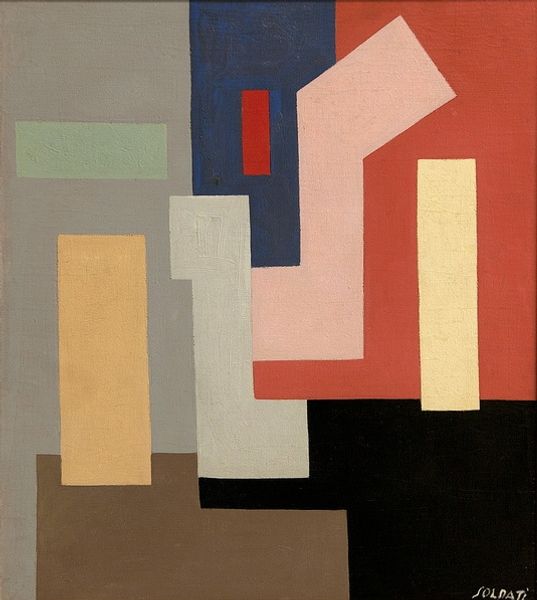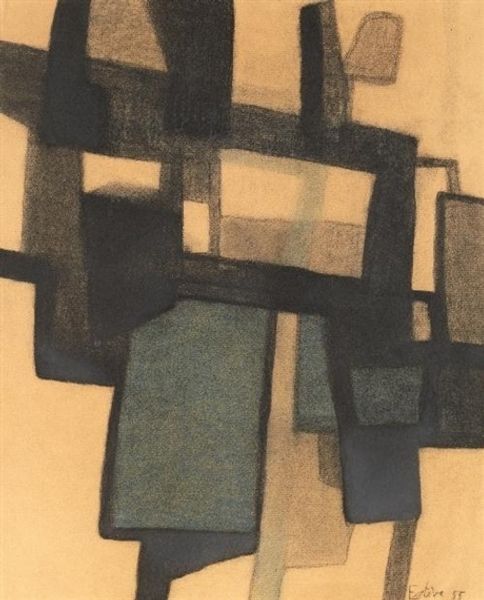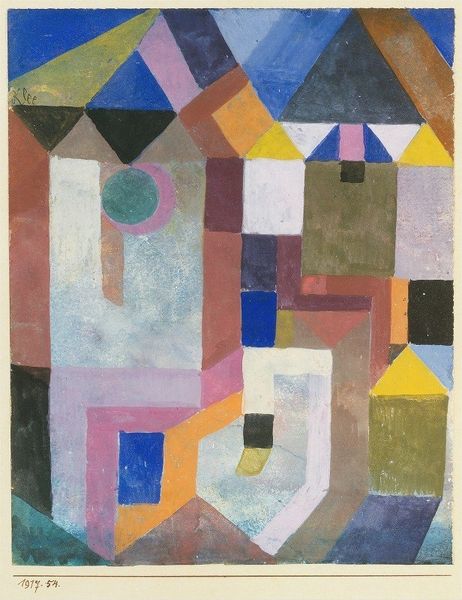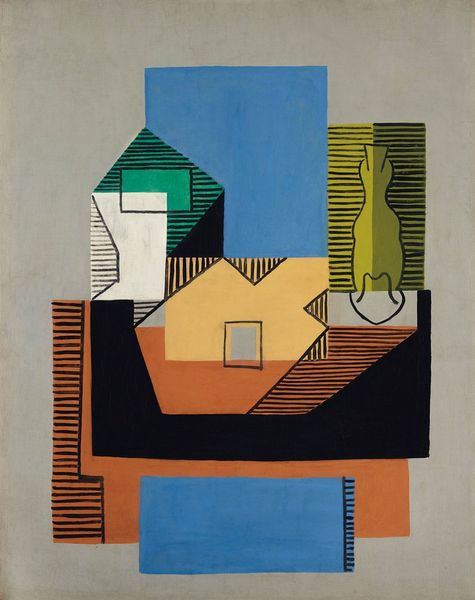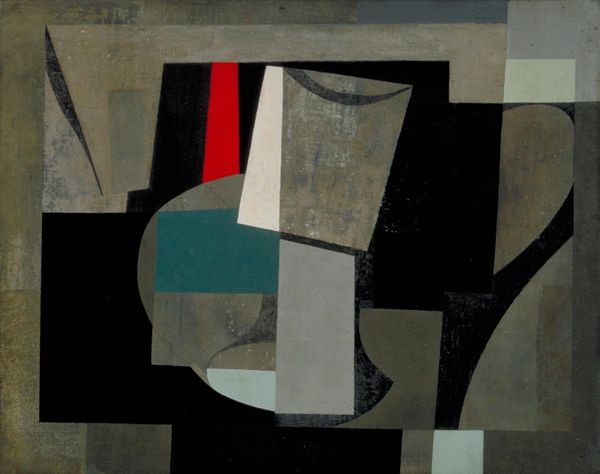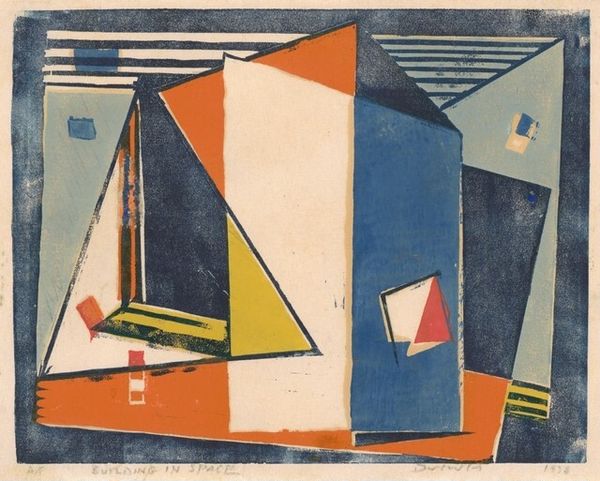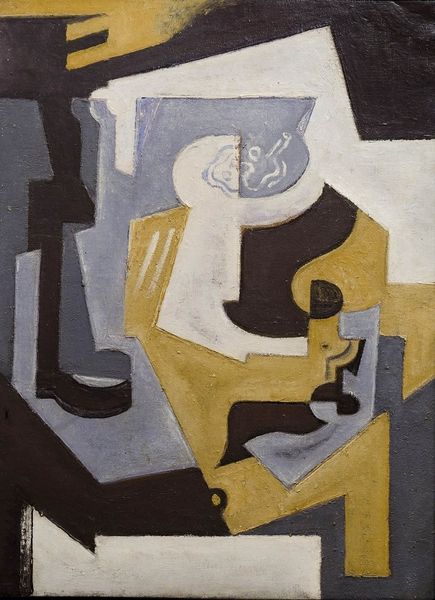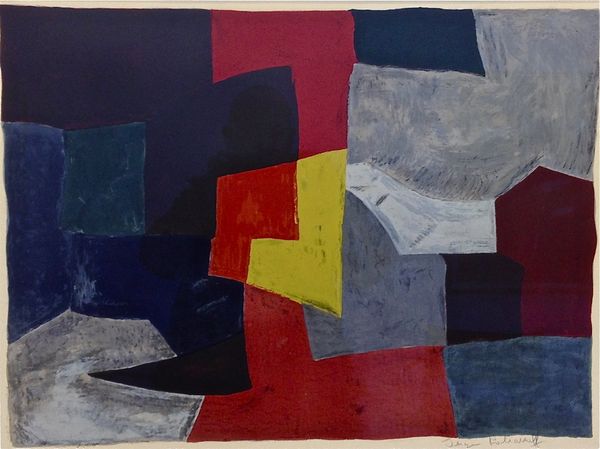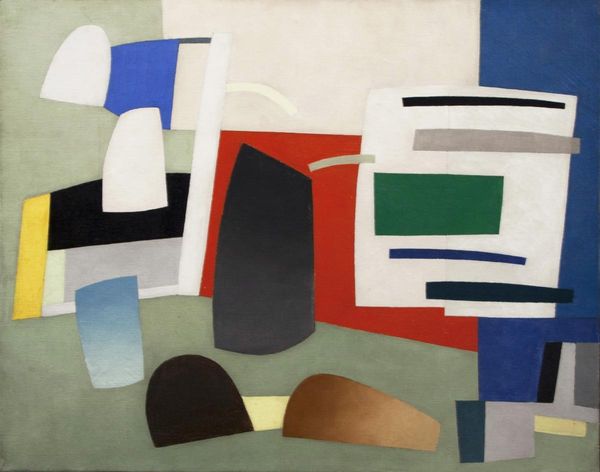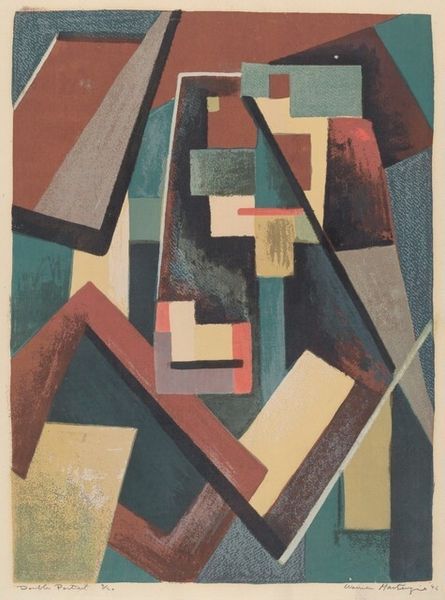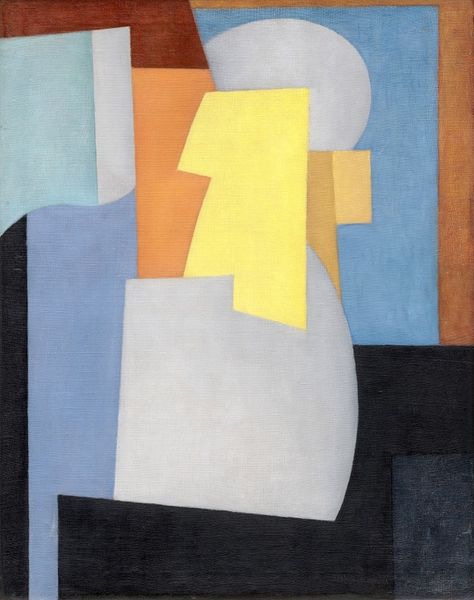
painting, acrylic-paint
#
abstract painting
#
painting
#
acrylic-paint
#
geometric
#
geometric-abstraction
#
abstraction
#
modernism
Copyright: Modern Artists: Artvee
Editor: This is Victor Vasarely’s "Senanque," created in 1948 using acrylic paint. The work is abstract and geometric, and its blocks of color are fascinating. What strikes me is the flatness, there isn't much depth or perspective here. How would you interpret this piece? Curator: It is essential to consider the interplay of geometric forms. Observe the arrangement of squares, rectangles, and other angular shapes. How do these shapes relate to one another within the compositional space? Consider the use of positive and negative space, and how they contribute to the overall structure of the painting. Note that there is an organizational strategy, despite its surface randomness. Editor: I see what you mean about the positive and negative spaces. Are the colors important? They seem quite muted for acrylics. Curator: Indeed. Analyze the relationships between the colors themselves. Notice the contrasts between the darker, cooler tones and the warmer hues. These variations influence our perception of depth and volume, further manipulating the geometry of the piece. Editor: So it is almost like Vasarely is toying with us, using the color and shape to make us perceive something that isn’t there? Curator: Precisely. Consider the surface texture as well, as texture can affect the light that is being reflected and change the color too. Editor: This has provided an entry point for grasping geometric abstraction, I was previously confused by this style. Curator: By focusing on the structural and compositional elements, we appreciate the inherent visual language that resonates through the artist's formal choices.
Comments
No comments
Be the first to comment and join the conversation on the ultimate creative platform.
